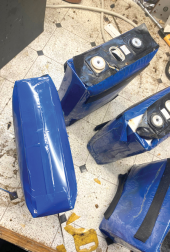BobR
Solar Enthusiast
- Joined
- Jan 4, 2021
- Messages
- 305
This is an article in Professional Boatbuilder magazine by Rod Collins; owner of 'Compass Marine' and the website MarineHowTo.com.
This would also be relevant to the Up In Smoke thread.
https://www.proboat.com/2022/07/solar-charge-controller-failures/

This would also be relevant to the Up In Smoke thread.
https://www.proboat.com/2022/07/solar-charge-controller-failures/

Last edited:


